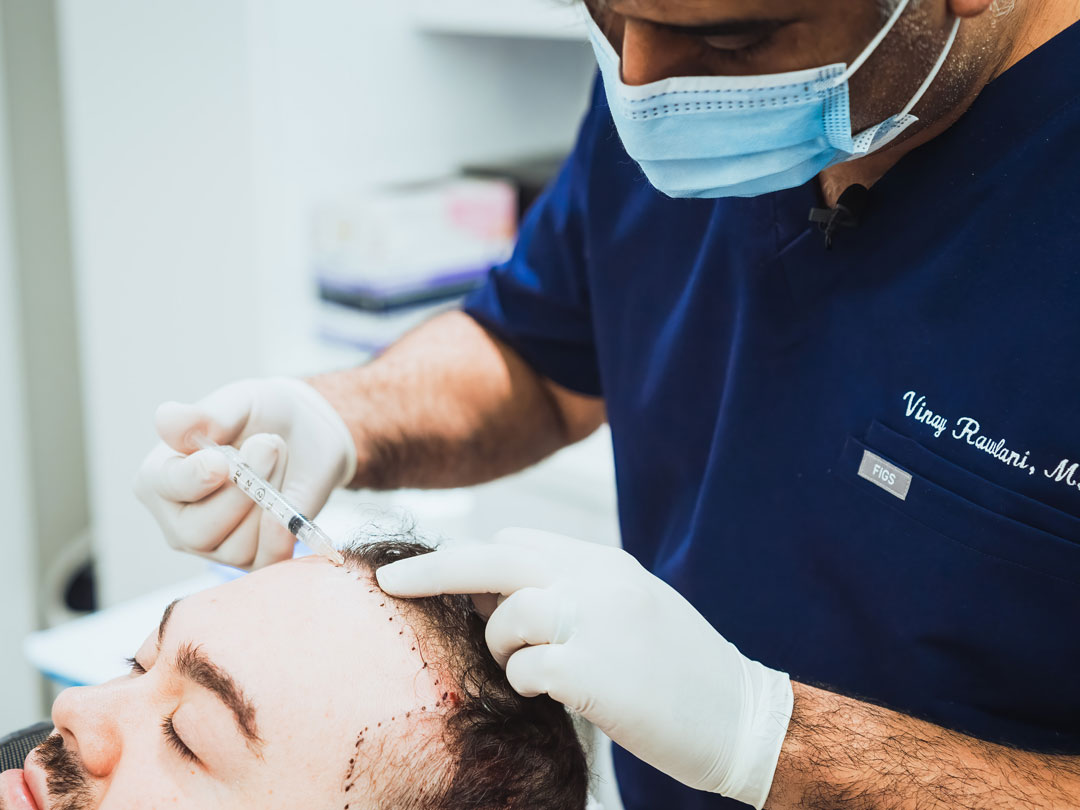
Does FUE hair transplant really work? Absolutely!
Follicular Unit Transplantation (FUT) and Follicular Unit Excision and Extraction are two surgical hair restoration procedures (FUE). FUT involves extracting a strip of tissue and separating the follicular units into naturally existing groups of 1–4 hairs under a microscope. The donor hair follicles are extracted one at a time during the FUE hair transplant technique.
Although FUE uses a softer touch than FUT, patients may ask if a FUE works. In this post, we’ll go over how FUE works and how your surgeon ensures that patients are as comfortable as possible before and after the surgery. Our objective is to provide patients with a better understanding of what to expect and how to prepare for it.
What Is A FUE Hair Transplant and How Does It Work?
FUE is a surgical hair harvesting process that uses one graft at a time to extract donor hair. It usually requires shaving the donor region to allow a good view of the grafts for extraction and improve accuracy during the hair transplant procedure’s crucial donor harvest stage. The hair donor zone is found on the back and sides of the head, and shaving this area allows surgeons to see the whole donor zone and the individual hair transplants they want to harvest. Graft harvesting tools have improved as a result of technological advancements. Punches are becoming smaller, minimizing scar and damage, and mechanized punches have perfected how surgeons score the upper layer of the skin while lowering the depth of the scoring. The follicular unit grafts are protected, and the technique has a lower impact on the surrounding scalp tissue.Types FUE Hair Transplants
The two procedures of FUE hair transplant in Chicago are Manual FUE and Robotic FUE. • Manual FUE: A surgeon does a manual FUE hair transplant by extracting individual hair follicles using portable equipment. • Robotic FUE: A robotic hair transplant equipment is used in a Robotic FUE treatment. The doctor determines the amount of hair to be harvested and draws a map of the chosen donor location. The surgeon does not collect the donor grafts; instead, the robot does it.The Transplantation Procedure
The FUE procedure begins once the grafts have been harvested. The surgeon creates recipient sites, and the grafts are softly but methodically put into these sites at the right angle and orientation, just like in FUT. FUE is a cutting-edge harvesting procedure ideal for people who want to avoid the standard FUT process. FUT entails taking an elliptical strip of tissue, dissecting it, and inserting the grafts into the recipient locations. In comparison, FUE hair transplantation causes minute, pinpoint scars all over the donor area. As the shaved hair regrows, it might be difficult to spot. It takes roughly two weeks to complete this process. Furthermore, because donor area scarring is nearly unnoticeable at hair lengths of less than 1 cm, FUE is appropriate for patients who keep their hair extremely short and desire a less visible scar.Is FUE Hair Transplant Painful?
The good news is that the operation will not cause any discomfort. Because each donor follicle must be harvested using a tool, Follicular Unit Extraction can be time-consuming. Additionally, the surgical outcomes might appear uncomfortable and unpleasant. During the process, however, a local anesthetic is used to numb the area of the scalp where the surgery will take place. There may be some discomfort initially, but once the anesthesia takes effect and the region is numb, patients should be pain-free.Does FUE Work
With graft survival rates of 90% at experienced clinics, FUE transplants can be just as successful as the more traditional FUT procedure. The success of the procedure is determined by the doctor’s competence, expertise, and experience.Recovery and Hair Care Maintenance after Surgery
A light dressing is applied to the surgical site after FUE hair transplant surgery, and it is removed after the patient returns home. To aid healing, the scalp is left exposed as much as possible the first night. Patients should return to our clinic the next day for a hair wash and a scalp examination. No dressing is normally required thereafter. Following FUE, little scalp discomfort and swelling are to be expected, and most patients will be given prescriptions for oral pain medication to use post-operatively if necessary. Each patient heals at his or her own pace. Some people may have slight discomfort for a few days, while others may experience irritated scalps for several weeks. The amount of grafts a patient has an impact on the healing process. Longer recovery durations will be required if more grafts are placed. Your doctor may also provide exosome-enhanced growth factor injections to speed up the healing process and boost hair regrowth. Healing usually takes seven to 10 days. Patients who are in excruciating pain for a lengthy period after their procedure, or who find that their scalp is not healing properly, should see their doctor as soon as possible to rule out any other underlying concerns interfering with the healing process.Schedule Your Consultation
For your hair transplant procedure, call us at our practice today. Our experienced hair restoration specialist from Northwestern Hair, Dr. Rawlani, will be happy to meet with you and enlighten you about your hair transplant options and when you can resume with your physical fitness routine. With us, you are certain to get excellent and compassionate hair transplant services.
